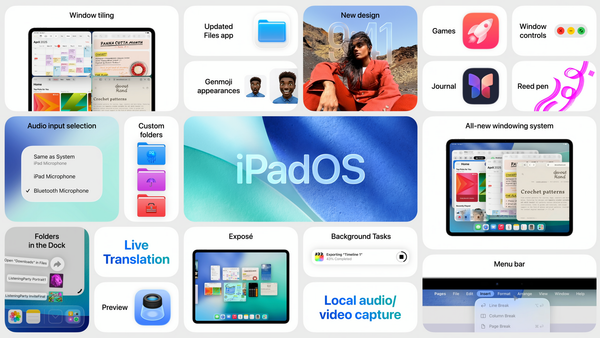Individual KPIs in Agile Teams – A Critical Yet Intriguing Perspective

Recently, I had an enlightening discussion with managers about developing KPIs for developers. At first glance, the idea of measuring individual performance in an agile environment—where collaboration and collective ownership are paramount—seems to conflict with agile values. However, as I walk my dog and reflect on this topic, it becomes clear that agile practices are fundamentally empirical, using a range of metrics such as flow measurements, velocity and burndown charts. The challenge is to harness these quantitative tools to provide meaningful, individual feedback without undermining the team’s cohesion.
In this blog post, I will explore a set of individual metrics designed to offer developers tangible insights into their work. I’ll also emphasize the indispensable role of context in interpreting these numbers and explain how to integrate them with the qualitative feedback mechanisms central to agile methodologies.
Why Consider Individual KPIs in Agile Teams?
Agile methodologies champion individuals and interactions over rigid processes. However, objective data is essential for assessing progress and quality. The idea behind individual KPIs is that objective, quantitative metrics can help developers understand their professional strengths and identify areas for improvement. These metrics are not intended as control instruments or pressure tools; rather, they serve as starting points for coaching and reflective discussions.
When used appropriately, individual KPIs can:
- Illuminate personal productivity trends.
- Reveal hidden bottlenecks in the development process.
- Help pinpoint areas where further learning or support might be needed.
The key is to ensure that these metrics complement, rather than replace, the rich qualitative feedback found in retrospectives and one-on-one sessions.
The Proposed Metrics and Their Significance
Below, I outline a set of metrics that can provide valuable insights while keeping the broader context in mind.
1. Pull Request Throughput
Definition:
Count the number of pull requests a developer submits and that are successfully merged within a defined period.
Insights:
- Productivity Indicator: A higher count can indicate a strong work rhythm.
- Contextual Consideration: It is essential to consider the complexity of the tasks; a developer working on intricate features may naturally produce fewer pull requests than someone handling simpler tasks.
2. Pull Request Cycle Time
Definition:
Measure the average duration from when a pull request is opened until it is merged.
Insights:
- Efficiency Gauge: Short cycle times can reflect a streamlined process and effective problem-solving.
- Quality Check: However, overly brief cycles might suggest inadequate review or insufficient testing.
- Contextual Consideration: Deadlines, project criticality, and team norms should be factored into the analysis.
3. First-Pass Merge Rate
Definition:
Determine the percentage of pull requests merged without extensive change requests.
Insights:
- Code Quality Indicator: A high first-pass merge rate suggests that the initial code submissions meet quality expectations and align well with project requirements.
- Contextual Consideration: Always account for the complexity of features and evolving project requirements when interpreting this metric.
4. Code Review Engagement
Definition:
Quantify how often a developer acts as a reviewer by tallying the number of code reviews performed.
Insights:
- Team Collaboration: Active participation in code reviews not only boosts code quality but also encourages knowledge sharing and cross-team collaboration.
- Contextual Consideration: The current project phase, team workload, and even organizational culture can impact the number of reviews a developer is able to conduct.
5. Defect Density
Definition:
Calculate the number of bugs or errors found in a developer’s code after deployment relative to the volume of code produced.
Insights:
- Long-Term Quality Measure: A low defect density is a strong indicator of careful and proficient coding practices.
- Contextual Consideration: Factors such as the legacy nature of the codebase, the introduction of new technologies, or changing project requirements must be considered to avoid misinterpretation.
The Crucial Role of Context
Numbers, by their nature, provide a simplified snapshot of performance. Their real value, however, only comes to light when viewed within the full context of the project environment:
- Task Complexity: Two developers might show similar throughput numbers, but one could be tackling more complex challenges than the other.
- Project Environment: External pressures—tight deadlines, shifting priorities, or resource constraints—can all influence performance metrics.
- Team Dynamics: The spirit of collaboration and the intricacies of team interactions often remain invisible in raw data.
Understanding these contextual factors is crucial. KPIs should never be used in isolation. Instead, they should spark deeper discussions during retrospectives or one-on-one coaching sessions, ensuring that any insights are grounded in the realities of daily work.
Integrating Metrics with Agile Practices
The effective use of individual KPIs requires a balanced approach:
Complementing Qualitative Feedback
- Retrospectives and One-on-Ones: These forums allow teams and individuals to interpret metrics collectively, discussing not just the numbers, but the stories behind them.
- Coaching Over Control: The primary aim is to empower developers by highlighting strengths and identifying areas for growth, rather than using metrics as a punitive measure.
Establishing a Supportive Culture
- Transparency and Trust: Sharing KPI data in an open and non-judgmental way fosters a culture of continuous improvement.
- Collaborative Goal Setting: Metrics should inform shared goals that align personal development with team success.
Guidelines for Effective Use
- Avoid Overemphasis: Rely on KPIs as one of several tools, ensuring they do not overshadow qualitative insights.
- Iterative Refinement: As teams evolve, so too should the KPIs. Regularly revisit and refine the metrics to ensure they remain relevant.
- Tailored Interpretation: Recognize that one-size-fits-all numbers are rarely useful; adjust interpretations based on the specific context of the project and individual contributions.
Conclusion
The debate over individual KPIs in agile teams is multifaceted. On one hand, metrics such as Pull Request Throughput, Cycle Time, First-Pass Merge Rate, Code Review Engagement, and Defect Density can illuminate important aspects of a developer’s performance and code quality. On the other, these numbers are only as meaningful as the context in which they are interpreted.
Used properly, individual KPIs can serve as powerful tools for personal development, providing objective data that, when combined with qualitative feedback, can guide continuous learning and improvement, and help formulate clear expectations for a developer.. The challenge—and opportunity—lies in transforming raw data into meaningful insights without sacrificing the collaborative spirit that is the hallmark of agile teams.
By embracing a balanced approach that values both quantitative and qualitative feedback, organizations can empower developers to harness their full potential while ensuring that the integrity of team dynamics remains intact. I look forward to further discussions on this topic and to learning how others integrate context-driven metrics into their agile practices.




